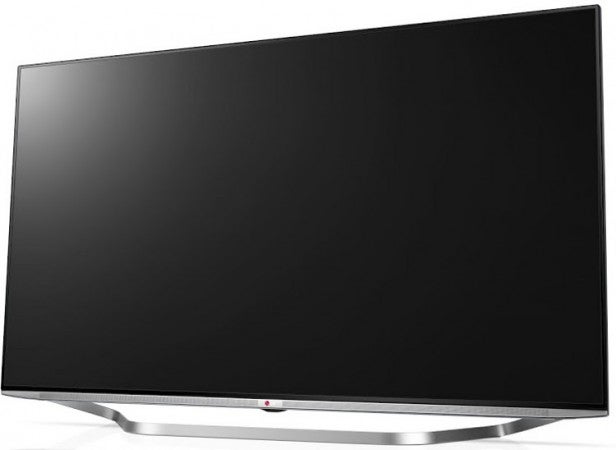LG 55UB950V Review
LG 55UB950V
LG's 4K and webOS TV has great bits and less great bits
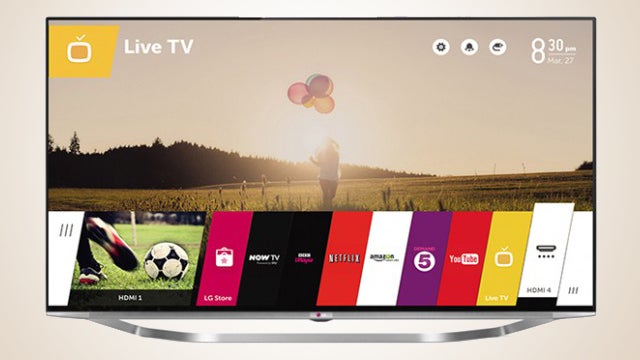
Sections
- Page 1 LG 55UB950V Review
- Page 2 Picture Quality Review
- Page 3 3D, Sound and Conclusions Review
Verdict
Pros
- UHD pictures look blisteringly sharp
- Pictures are bright and colourful
- webOS is a work of genius
Cons
- Serious black level problems
- Input lag is far too high for gaming
- 3D crosstalk issues
Key Specifications
- Review Price: £2300.00
- 55-inch LCD TV with edge LED lighting
- Native 4K/UHD pixel count
- webOS smart TV system
- passive 3D playback with 2 pairs of glasses included
- multimedia playback via USB and DLNA
What is the LG 55UB950V?
The 55-inch LG 55UB950V is the first TV from LG’s eagerly awaited 2014 TV range. And it’s a great way to get the ball rolling given its combination of a native UHD/4K resolution and the new and potentially revolutionary LG Smart TV with webOS interface. Or webOS for short. The likes of the Sony KDL-65X9005B and Samsung UE55HU8500 have set the bar very high, though, so LG has a great deal to live up to.
LG 55UB950V: Design and Features
The 55UB950V is the latest in a long line of very attractive TVs from LG. The black bezel around its 55-inch screen is both very slim and robustly finished, and it’s offset nicely by the metallic silver grilled section that drops down from the bottom edge. The open-framed metal stand provides a classy mount for the screen too.
The screen’s rear is deeper than some we’ve seen from LG, but we have no problem with this if it results in better picture and sound quality.
The grilled finish on the bottom edge is a pointer to the fact that the 55UB950V uses front-firing speaker ports – a rare discovery on a slim TV which experience suggests will serve up clearer, more powerful sound than the usual down-firing speaker systems.
Connections on the 55UB950V’s rear are extensive. Four HDMIs kick things off, and crucially these are all built to the UHD-friendly 2.0 standard. There are three USBs too (two of them built to the v2.0 standard), as well as Smart Mobile Link (MHLS 2) support and both LAN and integrated Wi-Fi options for accessing video, photo and music files on DLNA-ready networked devices, and going online with LG’s webOS system.
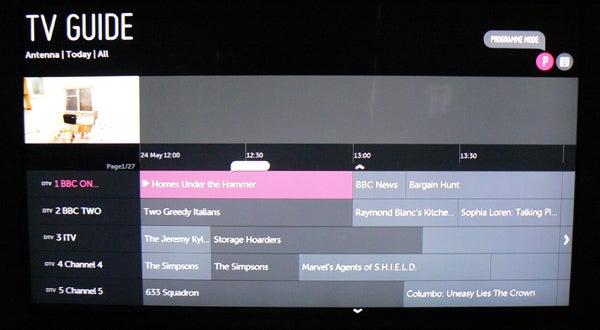
Ah yes, webOS (yes, the very same mobile OS that debuted on the Palm Pre). First shown off in TV form at the Consumer Electronics Show in Las Vegas to a universally rapturous response, LG’s new smart TV interface has always felt like the missing link in Smart TV interfaces. And you know what? Now that we’ve had the chance to live with webOS at home, we’re happy to say that it’s every bit as groundbreaking and intuitively excellent as we’d hoped it would be.
We’ll be doing a dedicated feature on webOS in the next week or two, so we won’t go into detail here. Suffice it to say that its content levels are very good (with highlights of the BBC iPlayer, Demand 5, Netflix, Amazon Instant and YouTube), its presentation and speed are both outstanding, and the way it helps you get the most out of the TV’s Smart potential is inspired. Plus, it’s actually fun and friendly to use, making it arguably the first smart TV interface that shouldn’t alienate anyone, no matter how technophobic they might be.
It’s important to stress, too, that the 55UB950V’s Netflix portal supports the service’s 4K streaming.
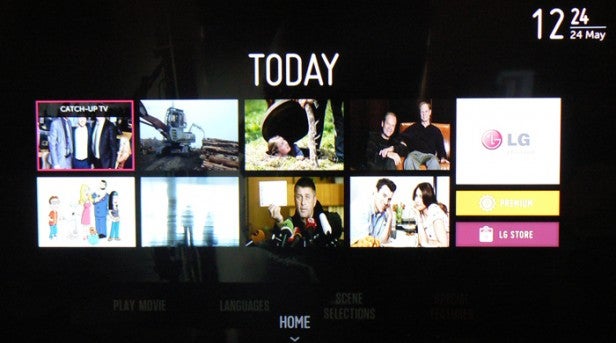
SEE ALSO: Best 4K/UHD TV Round-up
It speaks volumes about webOS that we’ve discussed it ahead of the 55UB950V’s UHD/4K resolution. But that’s certainly not to say we’re not also excited by the set’s 3840 x 2160 pixel count. LG’s ‘mainstream’ UHD debut last year made a strong impression, and we’ve already fallen hook, line and sinker for UHD’s charms. So we can’t wait to see what the 55UB950V can do. Even if its 55-inch screen might not give quite as much 4K impact as its 65-inch sibling.
The panel at the 55UB950V’s heart is one of LG’s own IPS types, meaning it should support wider viewing angles. Though experience suggests that IPS panels also struggle with black level response, so that’s something we’ll be looking out for in the test phase of this review.
The panel is lit by an edge LED system, backed up by a local dimming engine that can adjust the light levels of sections of the LEDs separately, to boost contrast. It also uses a combination of native refresh rate, backlight scanning and frame interpolation to deliver a claimed 1,250Hz-like motion reproduction engine, while picture processing comes in the shape of LG’s Triple XD Engine – many facets of which are controllable through LG’s attractive set up menus.
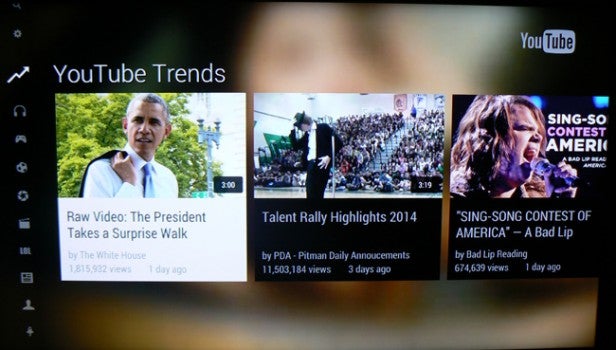
In fact, the 55UB950V’s picture calibration tools are so extensive that the TV enjoys the endorsement of the independent Imaging Science Foundation (ISF), with two ISF picture presets provided where an ISF engineer could store picture settings professionally calibrated during a visit to your house. Just bear in mind that if you want to take advantage of this, you’ll be looking at a cost of between £250 and £450 for a typical ISF calibration.
The 55UB950V is 3D capable, meanwhile, and inevitably it uses LG’s passive Cinema 3D system, with its battery-free, flicker-free glasses – two swanky metal-framed pairs of which are shipped with the TV. Passive 3D has proved a strong match for UHD resolutions, as the extra pixels enable the passive system to deliver a genuine full HD 3D Blu-ray experience without the crosstalk and flicker issues associated with the active 3D format.
The last things to cover here are the provision of an integrated Freeview HD tuner, and the fact that the sound system is a 2.1-channel system, with its 2 x 10W L/R speakers bolstered by a 15W woofer for expanded bass.
LG 55UB950V: Set Up
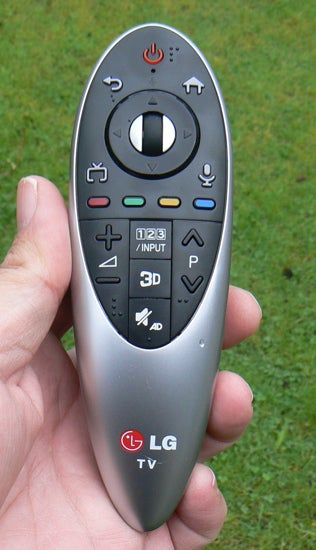 The 55UB950V sets out its ‘usability’ stall right away thanks to the Bean Bird. This cute animated little fella helps you through the initial set up procedures, rewarding you with an attractive and amusing animated screen each time you successfully complete one of the set up steps. Or if you opt to skip a step, Bean Bird again steps in with a funny ‘warning’ animation to make sure you realise the implications of missing a step.
The 55UB950V sets out its ‘usability’ stall right away thanks to the Bean Bird. This cute animated little fella helps you through the initial set up procedures, rewarding you with an attractive and amusing animated screen each time you successfully complete one of the set up steps. Or if you opt to skip a step, Bean Bird again steps in with a funny ‘warning’ animation to make sure you realise the implications of missing a step.
Bean Bird sounds a bit gimmicky on paper, we guess, but actually it’s done so well you can’t help but like it, and anyway, anything that tries to reduce the tedium of a TV’s initial install process has to be applauded – especially if it encourages people to set up key features they might otherwise just skip.
As well as enjoying Bean Bird’s antics, we were also seriously pleased during setup to find that if you tell the TV what set top box you have attached to which HDMI, the TV can automatically set its Magic Remote up to control that set top box. Excellent.
What the hell’s an LG Magic Remote? It’s one of two remote controls you get with the 55UB950V, and it’s out to introduce new levels of intuitiveness and speed to the smart TV navigation process via its combination of ‘point and click’, voice control and scrolling wheel options.
Its extreme sensitivity as a point and click device takes a little getting used to, but overall it works very nicely indeed with the webOS interface, enhancing the system’s already impressive speed.
When it comes to setting up the 55UB950V’s pictures to get the best from them, it’s nice to find LG continuing to provide a Picture Wizard tool to handhold technophobes through a few basic picture tweaking activities.
Irrespective of this, though, there are a few key rules we recommend you follow. First, for reasons explained in depth in the picture quality section, set the local dimming to Low, and if you’re watching a film, especially in a darkened room, shift the backlight below 50 – 45-48 worked best for us. We nudged colour down a little from its default position too, and where motion processing was concerned we stuck with either the Clear mode or, with particularly frenetic content, we turned it off completely.
We also turned off the dynamic contrast feature for any film viewing to aid image stability, and we made sure the noise reduction system was always turned off for HD and especially native UHD viewing. (It’s a shame the TV doesn’t do this latter change by default, especially with UHD.)
How we test televisions
We test every TV we review thoroughly over an extended period of time. We use industry standard tests to compare features properly. We’ll always tell you what we find. We never, ever, accept money to review a product.

